Article's Content
What are Search Engine Results Pages?
SERPs — or Search Engine Results Pages — are the pages that search engines like Google show you when you search for a query.
A few years back, the first results page (of the dozens of results pages a single Google search returns) looked like a clean list showing about ten links (and a couple of ads).
Fast forward to 2020… and the same first results page is now a crowded place. Because in addition to the traditional results showing the organic listings and paid ads, Google now showcases both a plethora of featured snippets, ads, and other unique elements on the results pages.
Then:
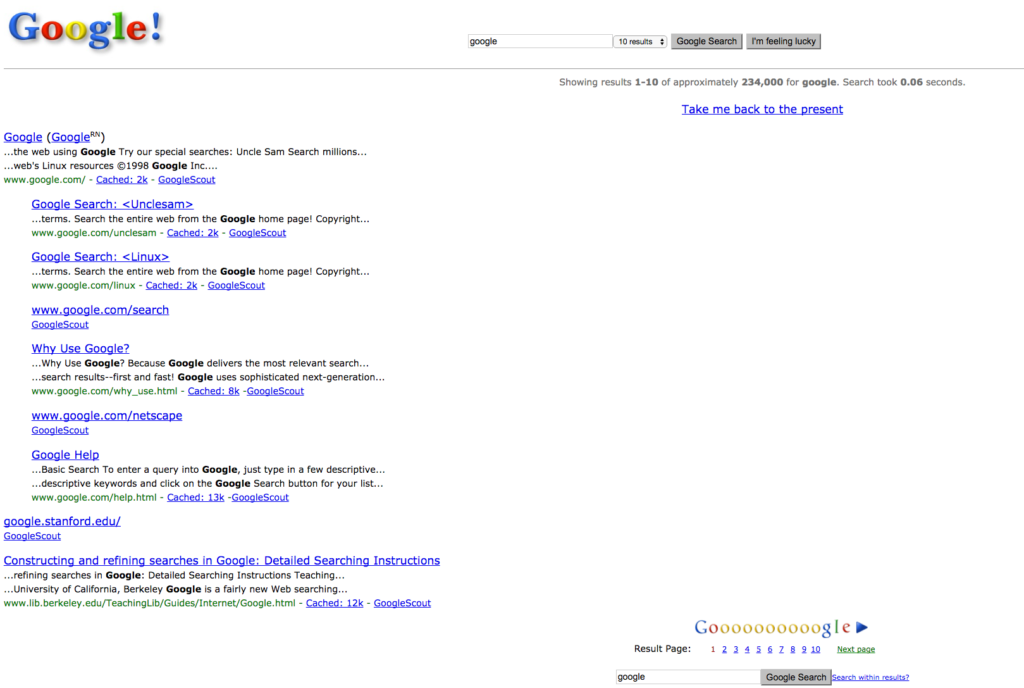
Now:
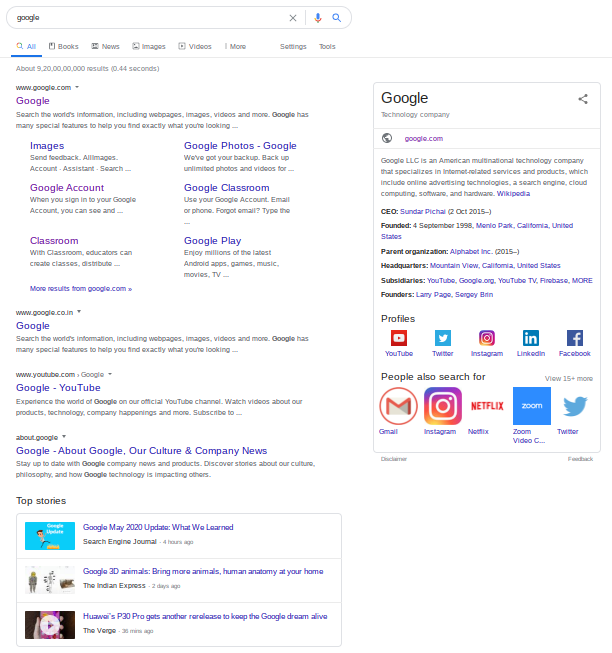
What are SERP Features?
SERP Features are elements like featured snippets, ads, videos, images, carousels, and others that Google shows on its results page above, in between, below, or on the right side of the traditional organic search results. Google has more than a dozen SERP features — and each is a result in its own way for the query made; Moreover, Goolge wants to feature shorts (short videos) to interact more user.
SERP Features: Ads
If a searcher looks for a keyphrase with heavy PPC competition, Google might show a bunch of ads above the organic results and another set of ads below the organic results. If you rank #1 for such a keyphrase, your visibility might still be poor because in some cases, it might be that the ads push you below the fold area… or worse make searchers miss your organic listing altogether.

SERP Features: Featured snippets
A featured snippet is also sometimes referred to as rank “0.”
Here, the results page shows the actual answer to the query either fully or partially right away. (The featured snippet is also dubbed the “answer box.”) This can either result in higher search clicks for you as you almost hijack the fold area with your content or can lower your clicks if searchers ignore the answer box and turn to the first listing that shows up below it. So technically, the number #2 result ends up winning here!
This can also result in lower or zero clicks in some cases.
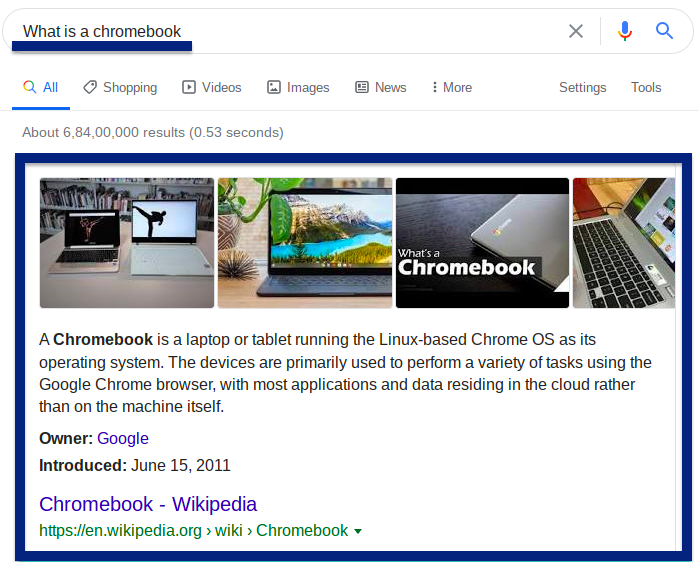
SERP Features: Videos
Sometimes Google chooses to answer some queries — how-to searches, for example — by fetching video results from YouTube or other sources. Your article might rank #1 for such a query but it’ll get pushed down by the videos, and as a result, your traffic will suffer. Some people might also simply opt for the video content and ignore yours.

SERP Features: Local packs
For general local queries, for example, “a church near me,” Google’s results page will almost always show a pack of three local results. These listings are picked from the ‘Google My Business’ profiles of the featured businesses. (This is a critical SERP feature that local businesses must absolutely try to own.)
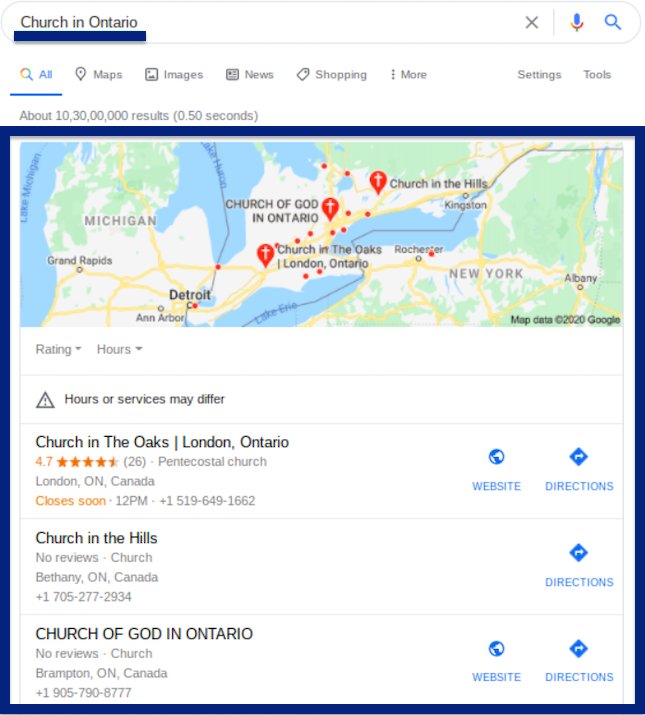
SERP Features: Knowledge bases and panels
If a searcher looks up for a celeb or a popular industrialist or brand, Google shows a “sidebar” on the right with info on them in addition to the other SERP features and organic results. These are known as knowledge bases and panels.
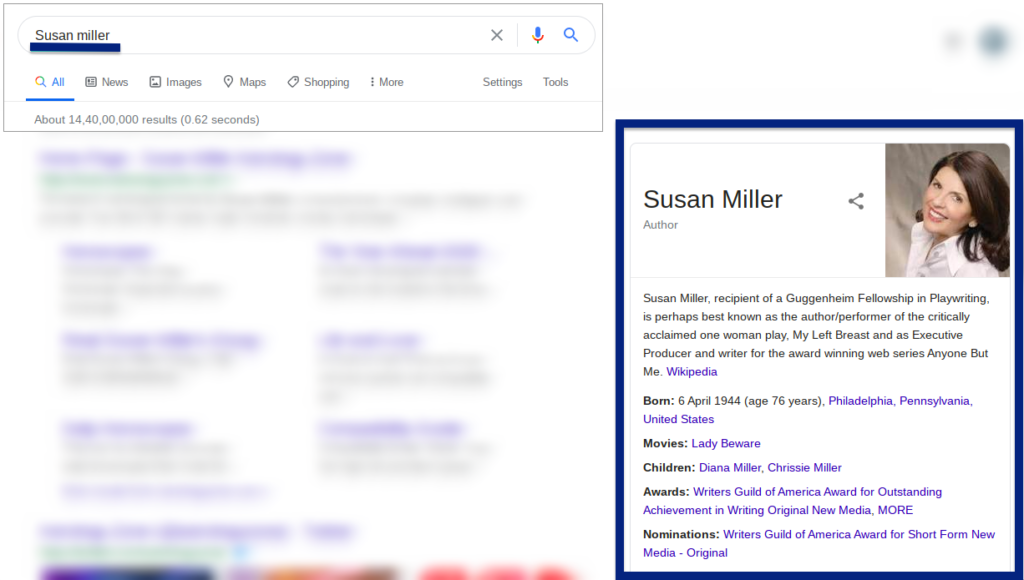
SERP Features: Tweets
If a searcher searches for a popular brand name, Google’s first results page usually links to the brand’s website as the first result and the second result is almost always the brand’s X feed (formerly Twitter feed).
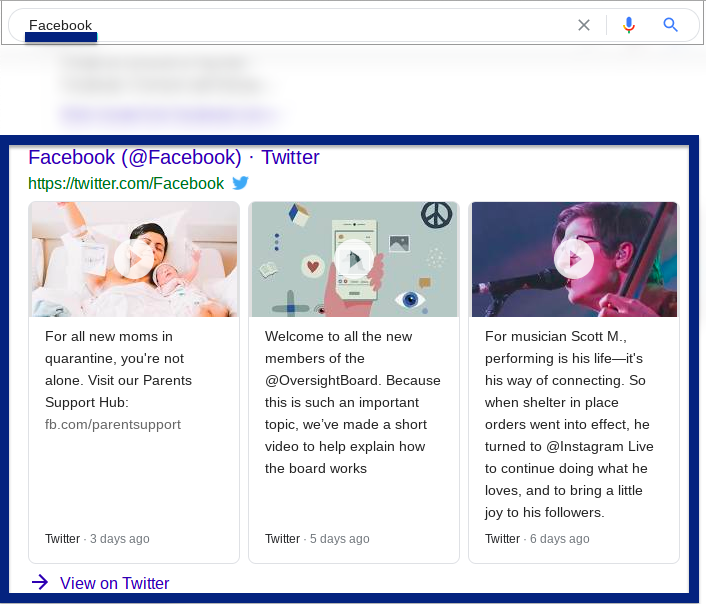
SERP Features: Images
If a search hints that the searcher is likely looking for images, Google’s results page will first show images. For example, a keyword like “cake plating” is likely answered best with images.
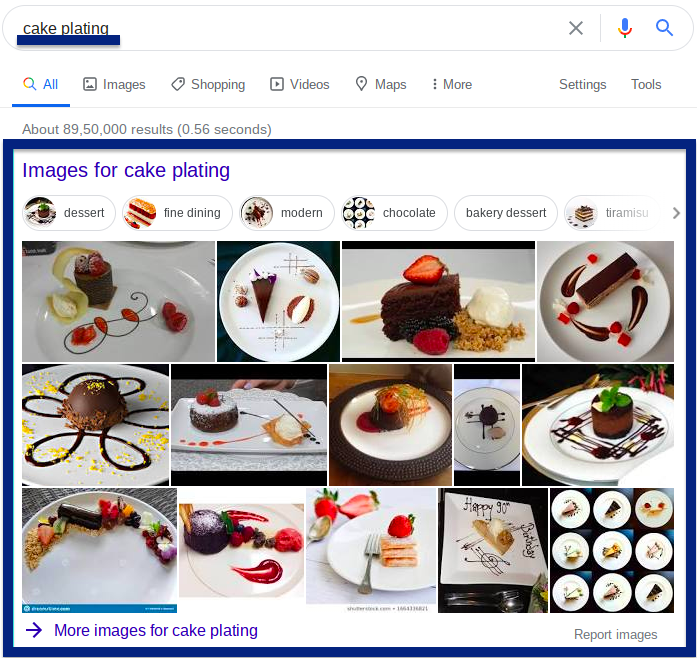
SERP Features: Shopping Ads
If searchers show the intention to buy something — a physical product such as a laptop — the results page will offer Google’s ads from retailers (or etailers!) that display the relevant product’s picture, price, store name, and more.

SERP Features: Related searches
For some searches, the results page might also show a carousel (or multiple carousels) displaying applications or tools or people related to the search term the searchers entered. These show up below the organic results. Also, the results page almost always ends with a “related searches” area displaying the keyphrases related to the one performed.

SERP Features: Carousels
For some keywords, the results page will throw up a carousel with direct links to the relevant results. Keywords like “hiring books” or “management movies” tend to result in such carousels.
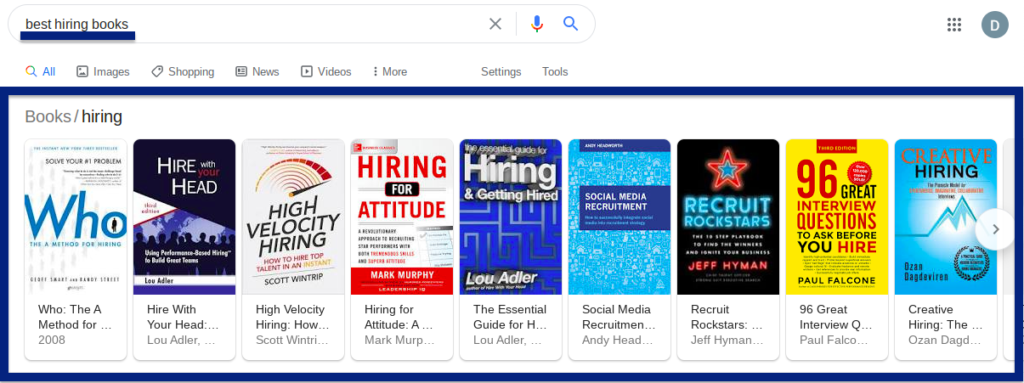
SERP Features: People also ask and Q&A on Google
People also ask and Q&A are two separate SERP features that help the searchers explore more of the topics they’re looking for. These can show up right after the first organic result or somewhere in the middle or at the bottom of the results page.
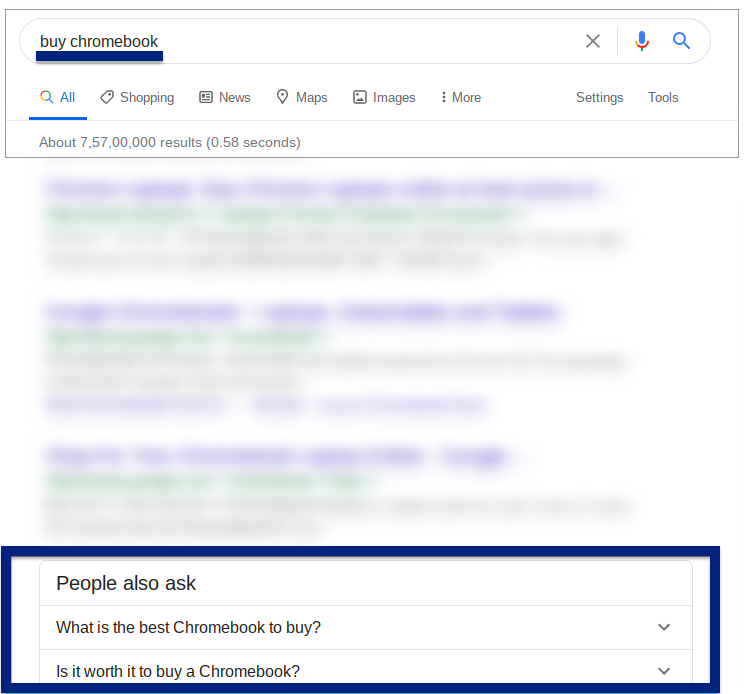
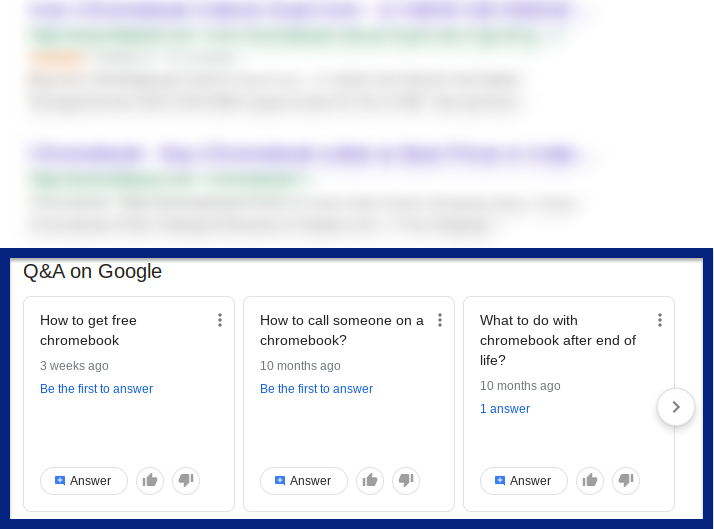
SERP Features: Top Stories
If a searcher uses a keyword or phrase that’s more like a developing story or has been in the news— such as FIFA 202X or COVID-19, then the results page for such a Google search will fetch news stories around it — global, national, and even local.
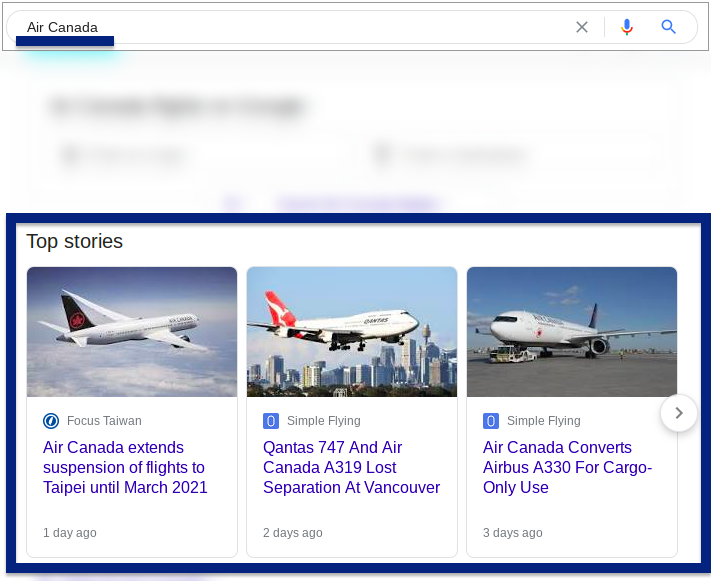
The changing SERPs change how SEO works…
Five years ago, you could just look at a keyword and its search volume and tell reasonably accurately how much traffic you could get for it if you ranked as the first result for it (or even second or third).
You could base your calculations on findings that said that the top three search results on the first SERP took about 75% of the search clicks — with 31.7% going entirely to the first result… and so on.
SERP features, however, change this completely:
- A post that you want to rank #1 for the keyphrase “hiring books” now has to compete with the carousel of books that the results page will probably throw above it.
- A post that you want to rank #1 for a topic like “how to start a Facebook Shopify store” now has to compete with YouTube videos that Google might just simply choose to show above it.
- A post for which you perhaps hold the first result spot ( #1) may still not do as well as you had hoped for because the results page might actually show a “featured snippet” (or #0) from the listing that ranks #5. (Yes, many clicks gone!)
This means to succeed with SEO, you need to continually feature in SERPs’ features and perform in-depth SERP analysis.
How to perform SERP Analysis?
In its simplest form, SERP analysis comes down to three steps.
Step #1: Set up SERP trackers for your key resources (and that of your competitors’).
As the first step of SERP analysis, you need to set up trackers that track your position on the search results pages for your top keywords, especially the transactional ones like “affordable time tracker solution,” if your product is time tracking software and your landing page ranks #1 for it. This way, you can monitor your key posts and pages and ensure that they don’t lose their position and actually climb to the top ranks over time.
You should also note if any of your posts or pages or other resources show up as featured snippets or as any other SERP features. You should monitor the domains of your competitors as well to study their SERP movements.
Step #2: Factor in SERP features when planning your search channel strategy.
Before you create content targeting a keyword, do a detailed analysis of what shows up for it on the first results page. If you notice a carousel at the top, your traffic calculations will get skewed. Likewise, if for a keyword you find the above-the-fold area of the results page saturated with a bloated featured snippet and videos, rethink.
Pay attention to search intent as well because it appears that search features tie closely with intent. A person looking for “how to plate a cake” will have the results page featuring a video. A tool like SERPchecker can show you how the overall results page looks like for a certain keyword. (You, too, can see this for yourself on Google.) So, if the results page looks like Featured snippet – People also ask – Organic results – Related searches for a certain keyword, you’ll have to fight a lot of saturation to outrank and get those clicks!
Step #3: Identify the SERP features that you should absolutely own.
If you’re a B2B company that uses gated pricing, make sure that your competitors don’t “leak” your prices and hack the featured snippet for “your company name pricing” kind of keyphrase. Likewise, if you’re a local business, make sure that your Google My Business listing is up-to-date so that your chances of featuring in the Local Pack increase. And so on.






